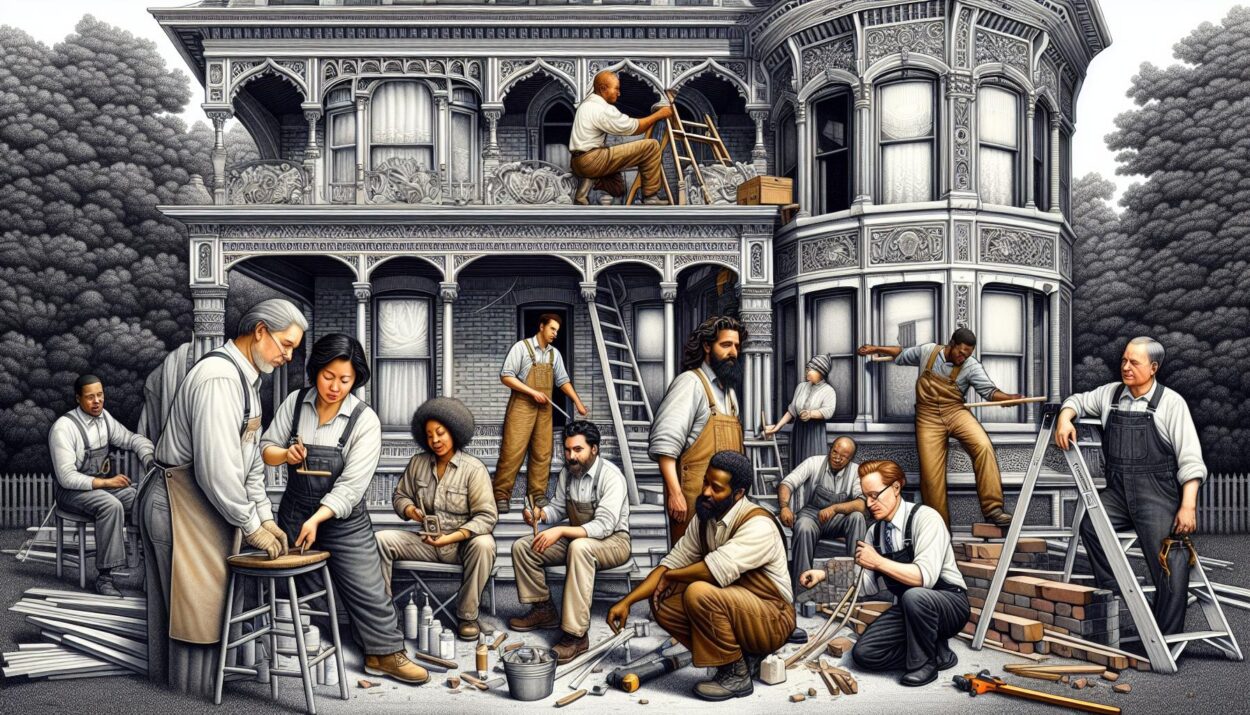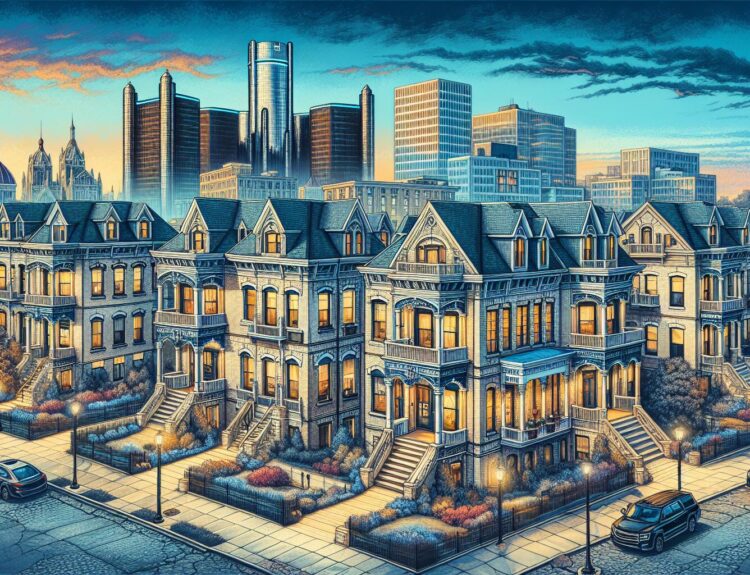I’ve always been drawn to the charm and character of historic homes, especially in neighborhoods like Brush Park in Detroit. The rich history and architectural details of these homes are truly captivating.
Walking through the streets of Brush Park, you can’t help but feel a sense of nostalgia and wonder about the stories these old homes hold. Each renovation project in this neighborhood is like uncovering a hidden gem, with every restoration breathing new life into the past.
Join me on a journey as we explore the world of historic home renovation in Brush Park Detroit, where preservation meets modernization in the most enchanting way.
Brush Park Detroit: A Historical Overview
Venturing into Brush Park Detroit is like stepping back in time. The neighborhood, known for its stunning Victorian homes and tree-lined streets, has a rich history dating back to the mid-19th century. As I stroll through the historic district, I marvel at the grandeur of the architecture and the stories that each building holds.
During the late 19th and early 20th centuries, Brush Park was a bustling hub for Detroit’s elite, with prominent residents and opulent mansions dotting the landscape. The neighborhood’s proximity to downtown Detroit made it a desirable location for the city’s wealthiest families.
Over the years, Brush Park has undergone transformation and revitalization, with many of its historic homes falling into disrepair. However, in recent decades, there has been a renewed interest in preserving the neighborhood’s architectural heritage. Today, historic home renovation projects are breathing new life into these old buildings, blending the charm of the past with the comforts of modern living.
Preserving the Architectural Heritage
Venturing through Brush Park Detroit, I am constantly in awe of the effort put into preserving its architectural heritage. This neighborhood is a treasure trove of Victorian-era homes, each with its own unique story. Walking down the tree-lined streets, I can’t help but admire the intricate details and historical significance embedded in every facade.
Historic home renovation projects in Brush Park are not just about modernizing structures; they are about honoring the past and embracing the future. The juxtaposition of classic architecture with contemporary amenities is a testament to the dedication of those involved in the restoration process.
Witnessing the meticulous restoration of these historical homes is a testament to the dedication of preservationists and architects alike. Every detail, from the ornate trim to the vibrant color schemes, is a nod to the craftsmanship of yesteryears.
The resurgence of interest in historic home renovation not only enriches the aesthetic appeal of Brush Park but also contributes to the community’s sense of identity and pride. By breathing new life into these architectural gems, we are ensuring that future generations can appreciate and learn from the rich history embodied in each brick and beam.
| Key Points | |
|---|---|
| Number of Victorian homes in Brush Park | 200+ |
| Average age of the homes | 150+ years |
| Average cost of renovation projects | $500,000+ |
| Number of ongoing restoration projects | 15+ |
Challenges of Renovating Historic Homes
Renovating historic homes in Brush Park Detroit presents unique challenges that require careful consideration and expertise. Here are some of the key hurdles I’ve encountered in these restoration projects:
- Preservation Guidelines: Following strict preservation guidelines to maintain the historical integrity of the homes while incorporating modern amenities can be a delicate balancing act.
- Materials: Locating authentic materials to match the original craftsmanship of Victorian-era homes is often a time-consuming and sometimes costly endeavor.
- Structural Integrity: Ensuring the structural integrity of older homes, some over a century old, can involve unexpected repairs and upgrades to meet current building codes.
- Cost: The cost of renovating historic homes can surpass initial estimates due to unforeseen challenges and the premium on preserving authentic architectural details.
- Skilled Labor: Finding skilled labor with expertise in historical restoration can be a challenge, as these specialized craftsmen are in high demand.
- Approval Processes: Navigating approval processes with historical preservation boards and local authorities adds complexity to renovation projects, requiring thorough documentation and adherence to regulations.
Despite these challenges, the rewards of preserving Brush Park Detroit’s historic homes are immeasurable. Each restored home stands as a testament to the neighborhood’s rich heritage and architectural legacy, connecting the past with the present for future generations to cherish.
Modernization Techniques in Historic Home Renovation
When modernizing historic homes, I always keep the following techniques in mind:
- Upgrading electrical systems while preserving the home’s original charm.
- Integrating smart home technology discreetly to enhance convenience.
- Installing energy-efficient fixtures to reduce utility costs.
- Repurposing original materials where possible to maintain authenticity.
I strive to strike a balance between preserving the home’s historical character and integrating modern amenities for comfortable living.
The Impact of Historic Home Renovation in Brush Park
Preserving historic homes in Brush Park Detroit not only maintains the architectural integrity of the neighborhood but also contributes to the community’s cultural heritage. By renovating these homes, I’m preserving a piece of history and honoring the craftsmanship of the past generations.
Renovated historic homes in Brush Park can serve as a symbol of revitalization for the entire community. The investment in restoring these properties not only enhances property values but also attracts individuals who appreciate the unique character and charm of these older homes.
Moreover, the renovation of historic homes can have environmental benefits. By repurposing existing structures and materials, we reduce waste and help promote sustainable practices in construction and design. Preserving historic homes also contributes to the reduction of urban sprawl and promotes walkability in the neighborhood.
In essence, by undertaking the renovation of historic homes in Brush Park Detroit, I’m not just restoring buildings; I’m revitalizing a community, preserving a legacy, and fostering a sense of pride in the rich history of the neighborhood.
Conclusion
Revitalizing historic homes in Brush Park Detroit is not just about renovation; it’s a testament to preserving the essence of a community. Each restored home tells a story of craftsmanship and heritage, adding to the neighborhood’s allure. By breathing new life into these structures, we are not only honoring the past but also shaping a vibrant future. The benefits extend beyond property values, reaching into the realms of sustainability and cultural significance. Renovating these homes is more than a project; it’s a commitment to preserving our roots and fostering a sense of pride in our shared history.






